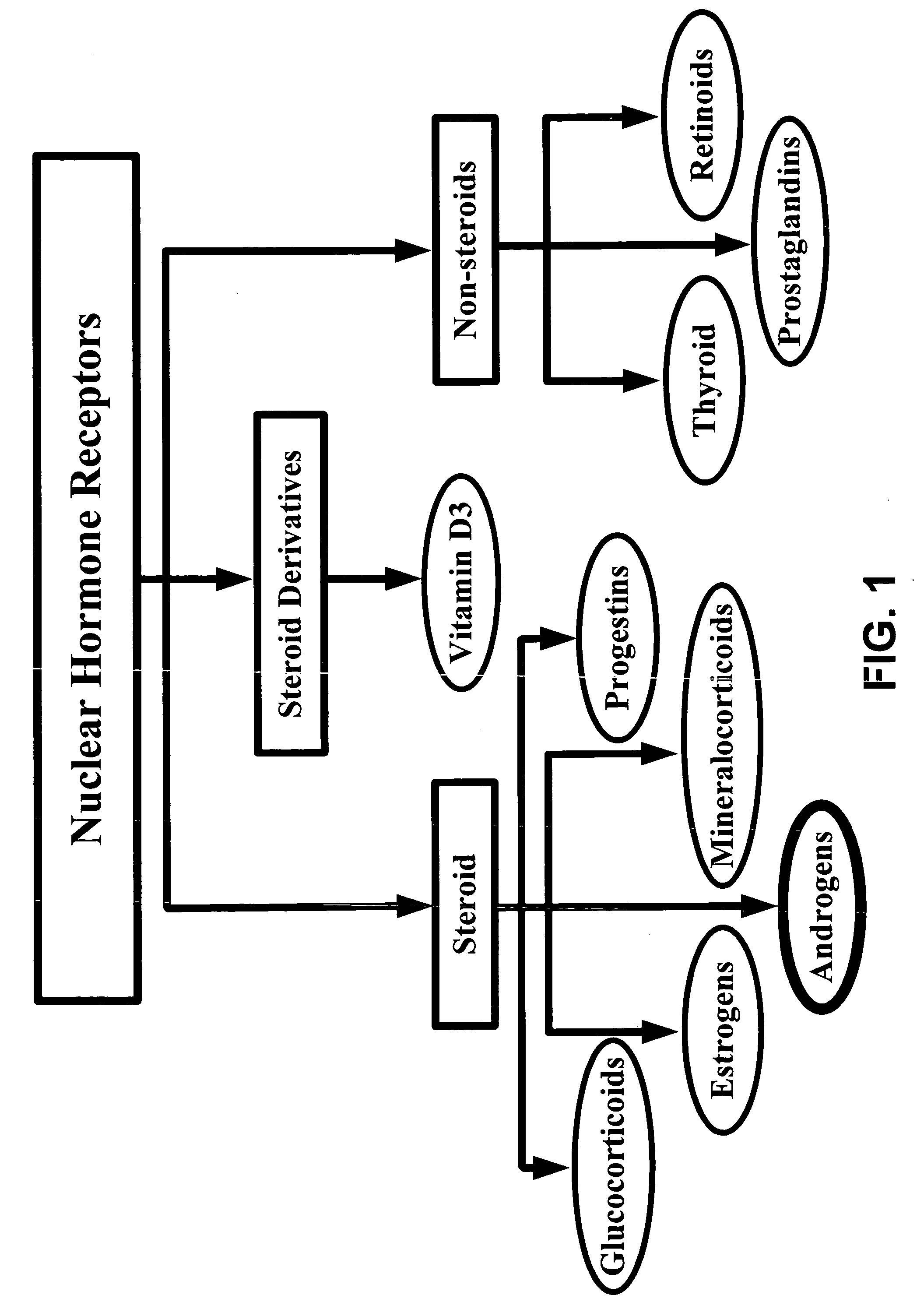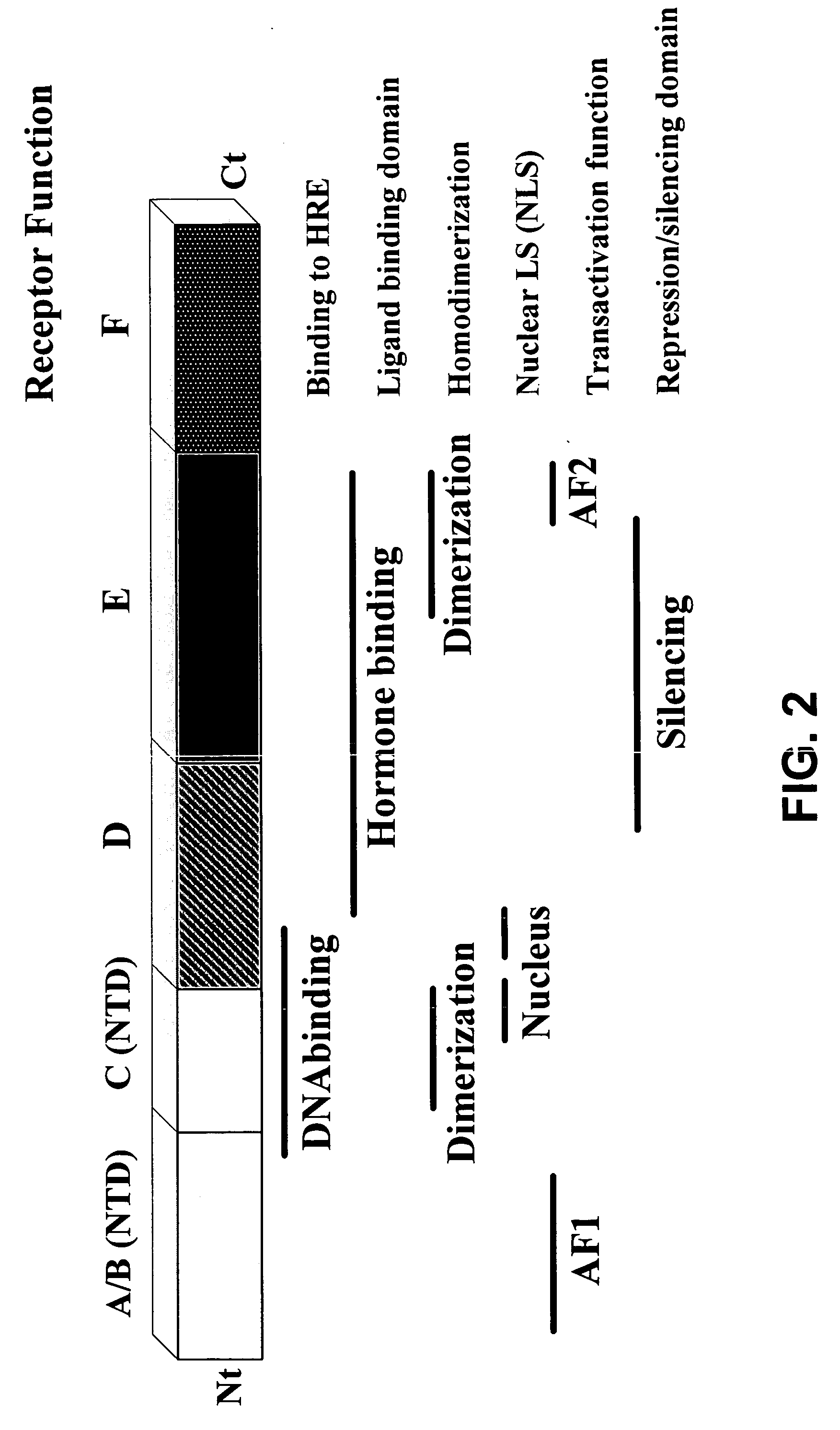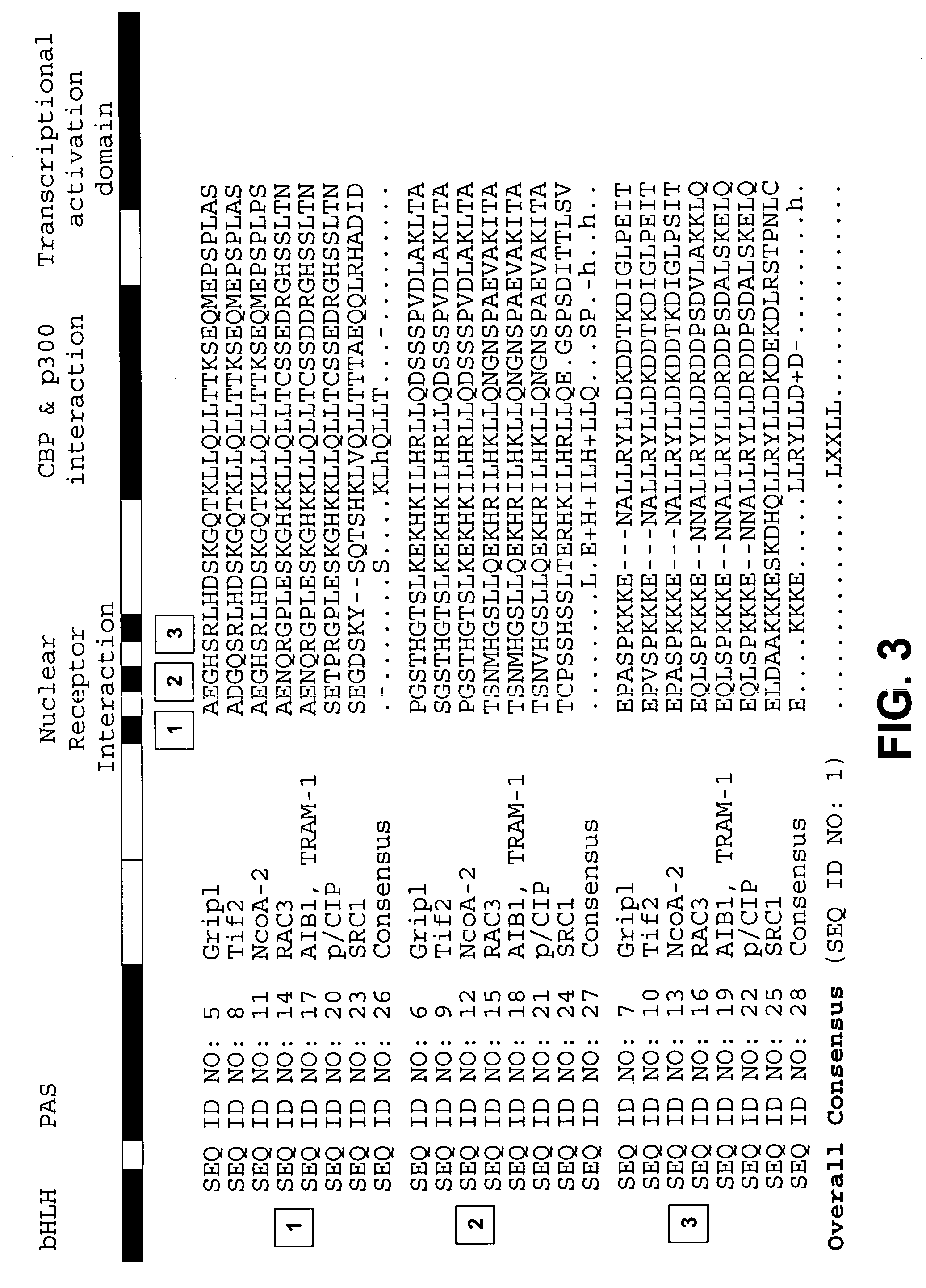Inhibitors for androgen antagonist refractory prostate cancer
a prostate cancer and androgen antagonist technology, applied in the direction of ict adaptation, instruments, molecular structures, etc., can solve the problems of affecting the effect of treatment, affecting the ability of treatment, and unable to find molecules that block coactivator binding directly at the coactivator binding site, etc., to achieve modulation of nuclear receptor activity, and modulation of androgen receptor activity
- Summary
- Abstract
- Description
- Claims
- Application Information
AI Technical Summary
Benefits of technology
Problems solved by technology
Method used
Image
Examples
example 1
Peptide Identification and Preparation
[0296] To identify peptides that interact with the androgen receptor, phage display techniques were performed using the AR ligand binding domain. Affinity selection of phage-displayed peptides was carried out using methods similar to those mentioned hereinabove (see Sparks, et al., in Phage Display of Peptides and Proteins, A Laboratory Manual, eds. Kay, B. K., et al., (Academic, San Diego), pp. 227-253, (1996)).
[0297] According to such a method, biotinylated AR LBD, obtained by a method of specific in vivo biotinylation of an AviTag peptide (available from Avidity, Denver, Colo.) sequence GLNDIFEAQKIEW (wherein the lysine is specifically biotinylated by coexpressed biotin ligase), fused to AR LBD during protein expression, was immobilized in a streptavidin-coated microtiter well. M13 phage particles distributed among 21 libraries displaying a total of greater than 2×1010 different random or biased amino acid sequences were added to the immob...
example 2
Protein Expression and Purification
[0299] Expression and purification of the androgen receptor ligand binding domain (LBD) was performed essentially as described in Matias, P., et al., J. Biol. Chem., 275 (34): 26164-26171, (2000). The cDNA encoding the androgen receptor LBD was cloned as an in-frame fusion with glutathione S-transferase (GST) in a modified pGEX2t vector (Pharmacia) including a coding sequence providing a flexible linker region between the protein domains. The E. coli strain, BL21 (DE3) STAR, was transformed with the expression vector encoding the GST-AR fusion. Expression of the fusion protein was carried out in a 4.5 L fermentation reactor in 2× YT medium containing 10 μM DHT, and induced with 30 μM IPTG at 15° C. for 16-18 hours. Cell pellets were collected by centrifugation and stored at −80° C. until processed. E. coli cells were lysed in the presence of 0.5 mg / ml lysozyme, Benzonase, 0.5% CHAPS, 1 μM DHT with rocking at room temperature for 30 mins, followed...
example 3
Binding Data for Coactivator Peptides Obtained with Surface Plasmon Resonance Methods
[0304] The relative affinities of biotinylated peptides to the AR LBD (bound with DHT) were determined using standard surface plasmon resonance techniques and a Biacore 2000 instrument. 1 mM stock solutions of each synthetic biotinylated peptide in DMSO were diluted 100-fold into HBS-P buffer (0.01 M HEPES pH 7.4, 0.15 M NaCl, 0.005% Surfactant P20) to generate 10 μM working solutions. A four-channel Sensor Chip SA was conditioned according to manufacturer's protocol with three consecutive, 1 minute injections of a solution containing 1 M NaCl and 50 mM NaOH (flowrate of 10 ul / min). After conditioning the streptavidin coated surface, HBS-P buffer was flowed through the cells to achieve a stable baseline prior to immobilization of the biotinylated peptides. To achieve the binding of approximately 250 RU peptides to individual cells, working solutions of peptides were diluted to 100 nM in HBS-P buff...
PUM
| Property | Measurement | Unit |
|---|---|---|
| temperatures | aaaaa | aaaaa |
| pH | aaaaa | aaaaa |
| pH | aaaaa | aaaaa |
Abstract
Description
Claims
Application Information
 Login to View More
Login to View More - R&D
- Intellectual Property
- Life Sciences
- Materials
- Tech Scout
- Unparalleled Data Quality
- Higher Quality Content
- 60% Fewer Hallucinations
Browse by: Latest US Patents, China's latest patents, Technical Efficacy Thesaurus, Application Domain, Technology Topic, Popular Technical Reports.
© 2025 PatSnap. All rights reserved.Legal|Privacy policy|Modern Slavery Act Transparency Statement|Sitemap|About US| Contact US: help@patsnap.com



